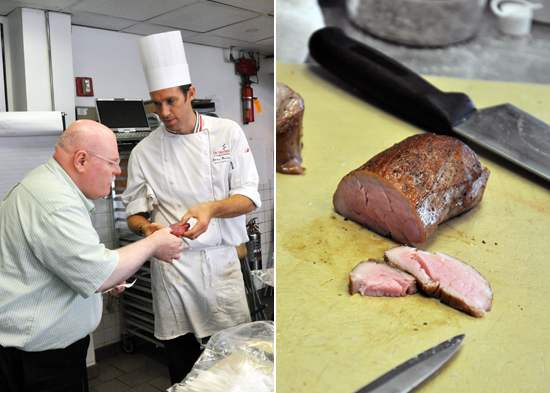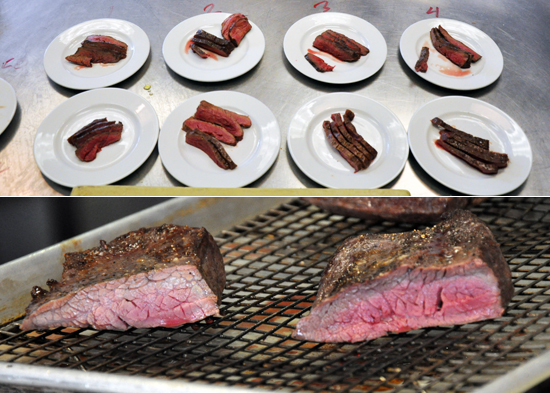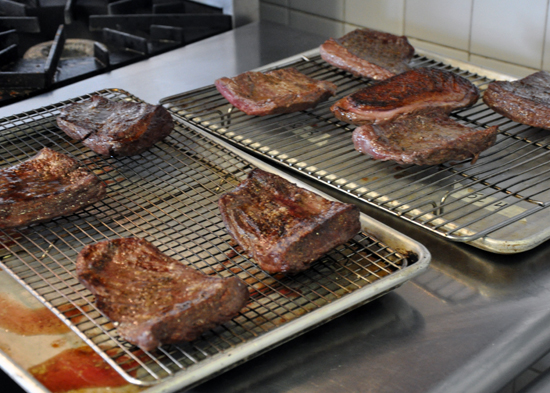
Chef James' Sous Vide Steaks
James Briscione tests the cooking technique after research in Italy.
Earlier this year, Chef Instructors James Briscione and Chris Gesualdi traveled to Italy to learn about sous vide techniques at Orved.

Since then, they have both been working hard trying out different techniques and methods here at the Institute of Culinary Education. Last week, Chef James tried out some those new techniques on steak. He tried the same cut of meat at 50 F and 52 F for one, two, three and four hours each. While they were cooking, he also cooked a duck breast and a pork tenderloin using sous vide technology.
To cook sous vide, food is sealed in vacuum-packed bags so there is no oxygen in contact with the food. That way, food can be cooked at low temperatures over long periods of time without the risk of dangerous aerobic bacteria (bacteria that require oxygen to grow and survive) developing and contaminating. Chef James wrapped the meat in foil before sealing it in plastic to cook sous vide in water — a technique he and Chef Chris learned while in Italy. Wrapping the meat in foil protects it from being exposed to light and oxidizing. Usually, exposure to light and air causes the meat to change color. When the meat was wrapped in foil and cooked sous-vide, it emerged looking completely raw but cooked to a perfect rare.

After the meat had been sealed and immersed in a water bath held precisely at the cooking temperature, Chef James broiled the steaks to give them some color and caramelization on the surface. He also seared one steak in a pan to see if it would behave differently than when it was broiled. One of the most interesting observations was that the steak that was cooked at 50 F released more juice during standing after cooking.

After cooking all the steaks, Chef James carefully sliced the meat and laid them out to taste each one to see what the differences were. Chef James also invited ICE Culinary Arts Director Mike Handal to taste the steaks. The two carefully analyzed the differences in appearance and taste between the variable cooking times and temperatures. While there was no clear winner, it was very apparent that the steak was certainly delicious. The duck breast and pork tenderloin also emerged perfectly cooked — juicy and tender. We can’t wait to see what he tests next!


Add new comment